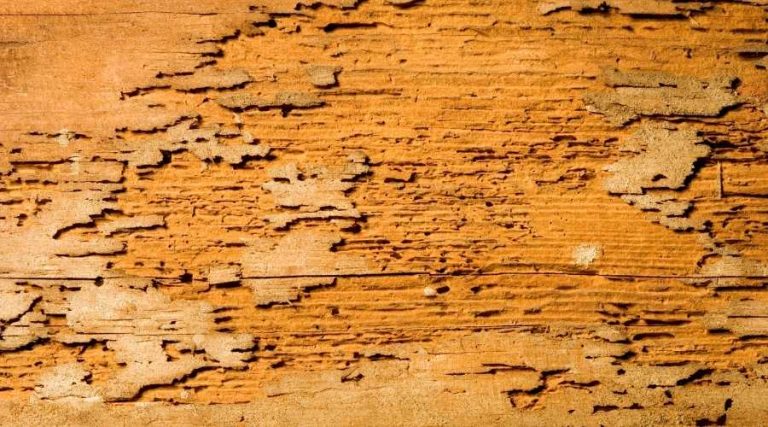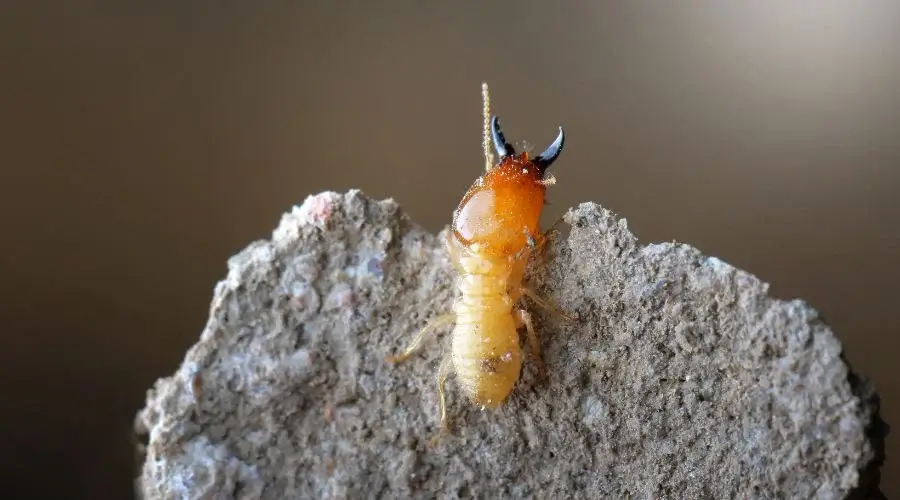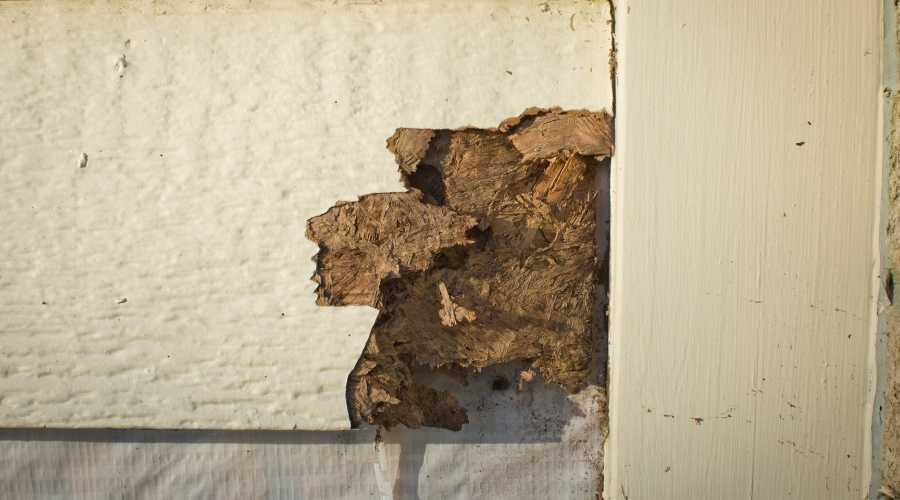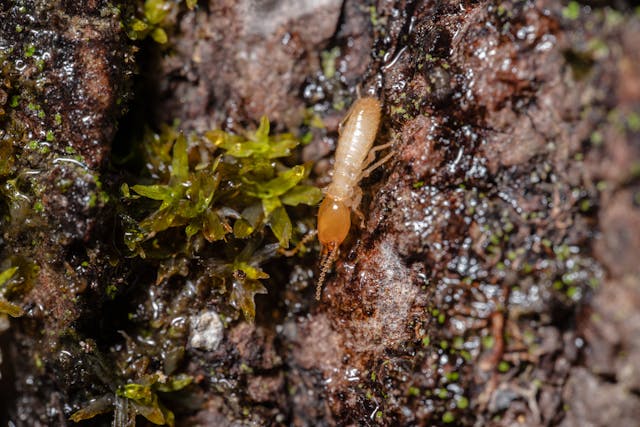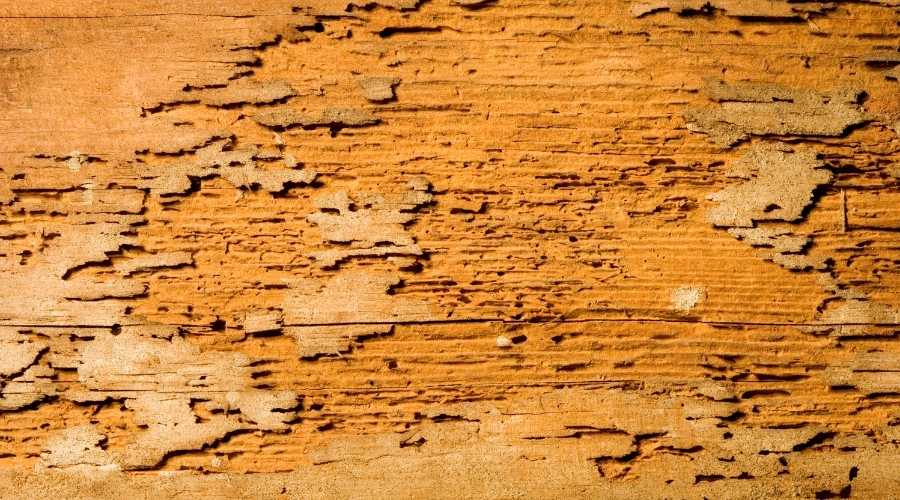Termite damage can compromise the structural integrity of your home or building. Identifying the signs early and implementing preventive measures can save you from costly repairs. If you suspect termite infestation, taking swift action is crucial. Below, we discuss ways to identify, prevent, and repair termite damage effectively.
Key Takeaways:
- Identify Termite Damage: Look for hollow wood, cracked paint, and mud tubes.
- Prevention Methods: Use termite-resistant materials, eliminate moisture, and schedule regular inspections.
- Repair Techniques: Replace damaged wood, apply pressure treatment, seal cracks with caulk, and use wood fillings.
- Professional Help: Always consult a pest control expert for thorough termite removal and damage assessment.
Recognizing Termite Damage
Early detection is key to minimizing termite damage. Look for these signs:
- Hollow or Soft Wood: Termites consume wood from the inside out, making it sound hollow when tapped.
- Mud Tubes: Subterranean termites build protective mud tunnels along walls and foundations.
- Cracked or Bubbling Paint: Termites create moisture buildup, leading to paint damage.
- Discarded Wings: Winged termites, or swarmers, shed their wings after establishing a new colony.
Preventing Termite Damage
Eliminate Moisture Sources
- Fix leaky pipes, faucets, and drainage issues.
- Ensure proper ventilation in attics and crawl spaces.
- Keep gutters and downspouts clean to prevent water buildup.
Use Termite-Resistant Materials
- Opt for treated wood, concrete, or metal during construction.
- Apply termiticides to wood before installation.
Create Physical Barriers
- Install metal mesh screens over vents.
- Use sand barriers around the foundation, as termites struggle to tunnel through them.
Regular Inspections
- Schedule annual termite inspections with a professional.
- Check your home’s foundation, windows, doors, and wooden structures regularly.
Repairing Termite Damage
Replace Damaged Wood
If termites have severely compromised the wood, replacing it is the best solution.
- Steps:
- Remove the affected wood.
- Treat surrounding areas with a termiticide.
- Install new, termite-resistant wood.
Repair Wall Cracks
Cracks in walls provide entry points for termites.
- Steps:
- Remove loose debris from the crack.
- Apply caulk or wood filler to seal the gap.
- Paint over the repaired area to reinforce protection.
Apply Pressure Treatment
For wooden structures like beams and joists, pressure treatment can reinforce the wood’s resistance.
- Steps:
- Inject preservatives into the damaged wood.
- Allow time for absorption and drying.
- Reinstall treated wood to prevent future infestations.
Use Wood Fillings
For minor termite damage, wood fillers can restore structural integrity.
- Steps:
- Remove loose wood.
- Apply wood filler with a putty knife.
- Sand and paint for a smooth finish.
Repair With Scrap Lumber
If extensive damage occurs, reinforcing affected areas with scrap lumber can provide temporary support.
- Steps:
- Cut scrap lumber to fit the damaged area.
- Secure it with nails or screws.
- Apply sealant for extra durability.
Seal With Paint
Painting exposed wood acts as a protective layer against termites.
- Steps:
- Sand the wood surface.
- Apply termite-resistant primer.
- Paint with a high-quality exterior paint.
Consider Professional Extermination
While DIY methods help mitigate damage, professional pest control ensures complete termite removal. Experts use advanced techniques such as:
- Fumigation: Effective for severe infestations.
- Baiting Systems: Targets and eliminates entire colonies.
- Liquid Termiticides: Creates a chemical barrier to prevent future attacks.
Frequently Asked Questions (FAQ)
1. How long does it take for termites to cause serious damage?
Termites can cause significant damage in as little as six months. Within a few years, they can compromise the structural integrity of a home if left untreated.
2. Can I fix termite damage myself?
Minor damage can be repaired with wood fillers, caulk, or scrap lumber. However, severe structural damage requires professional assessment and repair.
3. What is the most effective way to prevent termites?
Regular inspections, moisture control, and using termite-resistant materials are the best preventive measures.
4. Are termites only found in wood?
While termites primarily feed on wood, they can also damage paper, drywall, and insulation.
5. Should I replace wood that has been treated for termites?
If the structural integrity is compromised, replacement is necessary. Otherwise, treating and reinforcing the existing wood may suffice.
6. Do termites return after treatment?
Yes, termites can return if preventive measures are not taken. Regular inspections and applying termiticides help prevent reinfestation.
7. How much does termite damage repair cost?
Repair costs vary depending on the extent of the damage. Minor repairs may cost a few hundred dollars, while severe structural repairs can run into thousands.
Conclusion
Termite damage can be extensive and costly, but early detection, prevention, and proper repairs can save you money and stress. If you suspect termites in your home, take immediate action by using the repair techniques mentioned above and consulting a professional pest control service. Regular maintenance and inspections will help keep your home termite-free for years to come.
Pest Control Services in Escondido, CA
Dealing with a pest problem? Our expert team provides effective and reliable pest control solutions to keep your home or business pest-free. Call us today: (619) 900-6771

